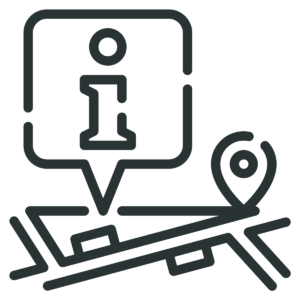The best resource for understanding the details of a place are the people who live their lives in that place – with their local knowledge of geography, economy, culture, and other contexts. And many of these people are motivated to contribute to the collective knowledge about their place.
What is VGI?
VGI is geographic information that is voluntarily provided by individuals or groups of individuals, often using the internet and mobile devices. Typically they are non-experts who have a personal interest in a specific location or topic. This type of information can include location-based data such as GPS coordinates, photographs, comments, and other user-generated content.
With VGI, global South populations are empowered to produce their own data.

Examples of VGI include crowd-sourced maps such as OpenStreetMap, citizen science projects, social media posts with location information, and geotagged photos. VGI provides valuable information for a wide range of applications, including urban planning, environmental monitoring, disaster response, and tourism.
VGI is often used to complement GIS (Geographic Information System), as it provides additional, real-time, and diverse data sources.
Quality Control Concerns
There are legitimate concerns about the quality, reliability, and accuracy of the data collected through VGI. This is where Trufi Association comes in. We address quality concerns with VGI by training volunteers to use VGI tools and techniques, and by wrangling and validating the data collected to ensure its accuracy and reliability.
Our expertise in advanced transport mapping and support for OpenStreetMap (OSM) communities complement the strengths of partners such as HOTOSM (Humanitarian OpenStreetMap) and TUMI (Transformative Urban Mobility Initiative).
A more complete list of Trufi partners is here.
The Power of VGI
- Transport Services Mapping (GTFS): Transform VGI to GTFS data to provide valuable information to transport agencies, MaaS innovators, entrepreneurs, and researchers, enabling them to create more efficient and effective transportation systems, develop new mobility services, and conduct research on transportation behavior and patterns.
- Rural Transportation Mapping: Create transportation maps for rural areas, where public transportation services are often limited.
- Infrastructure Mapping: Map infrastructure such as roads, bridges, and buildings, which can inform infrastructure planning and maintenance efforts.
- Disaster Response Mapping: Train volunteers to use VGI tools and techniques to create detailed maps that can be used in disaster response efforts.
- Environmental Monitoring: Collect location-based data for environmental monitoring purposes, such as tracking deforestation, water pollution, or carbon emissions.
- Civil Society: Collect data on various topics, such as public health, education, and social services.
- Cultural Heritage Mapping: Create maps of cultural heritage sites for tourism and preservation efforts.
- Community Mapping: Involve local communities in mapping their neighborhoods to identify areas of improvement and enhance community engagement.
- Social Justice Mapping: Map social justice issues such as access to education, healthcare, and basic services to guide policy-making and advocacy efforts.
- Agriculture Mapping: Map agricultural land use and crop patterns, which can contribute to land management and food security efforts.
- Citizen Science Mapping: Involve citizens in scientific research, such as tracking wildlife or monitoring air quality.
- Water Resource Mapping: Map water resources and their availability to inform water management and conservation efforts.
- Historical Mapping: Create maps of historical events, such as archaeological sites or colonial settlements to guide heritage preservation efforts.
- Tourism Mapping: Create maps of tourist destinations and attractions to aid in tourism planning and marketing efforts.
